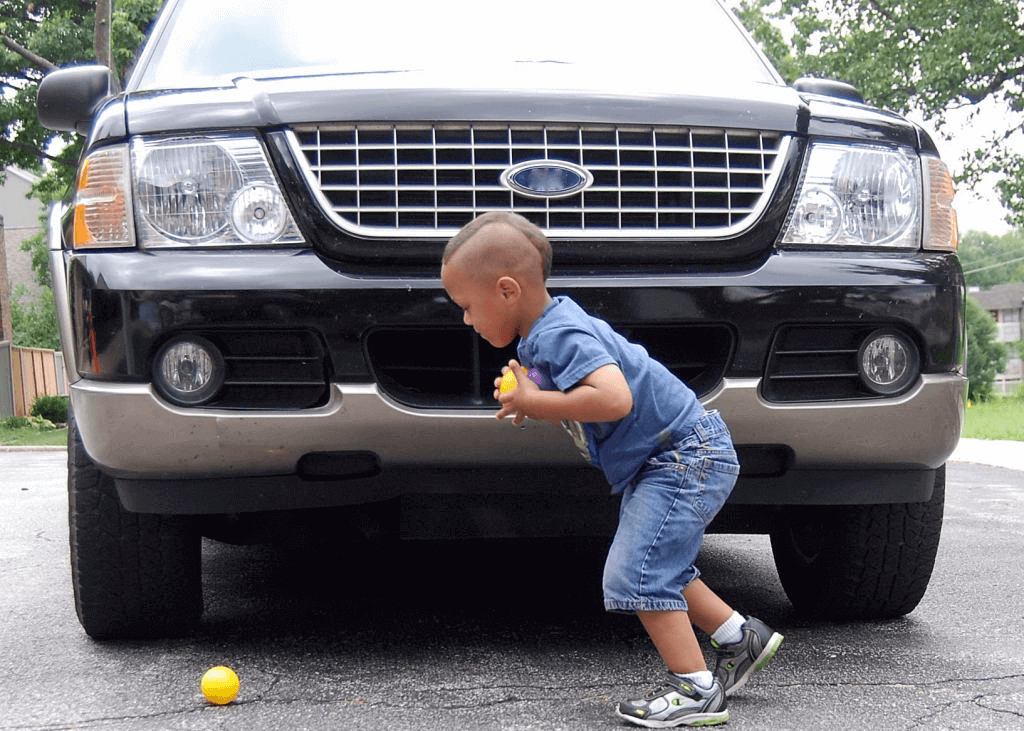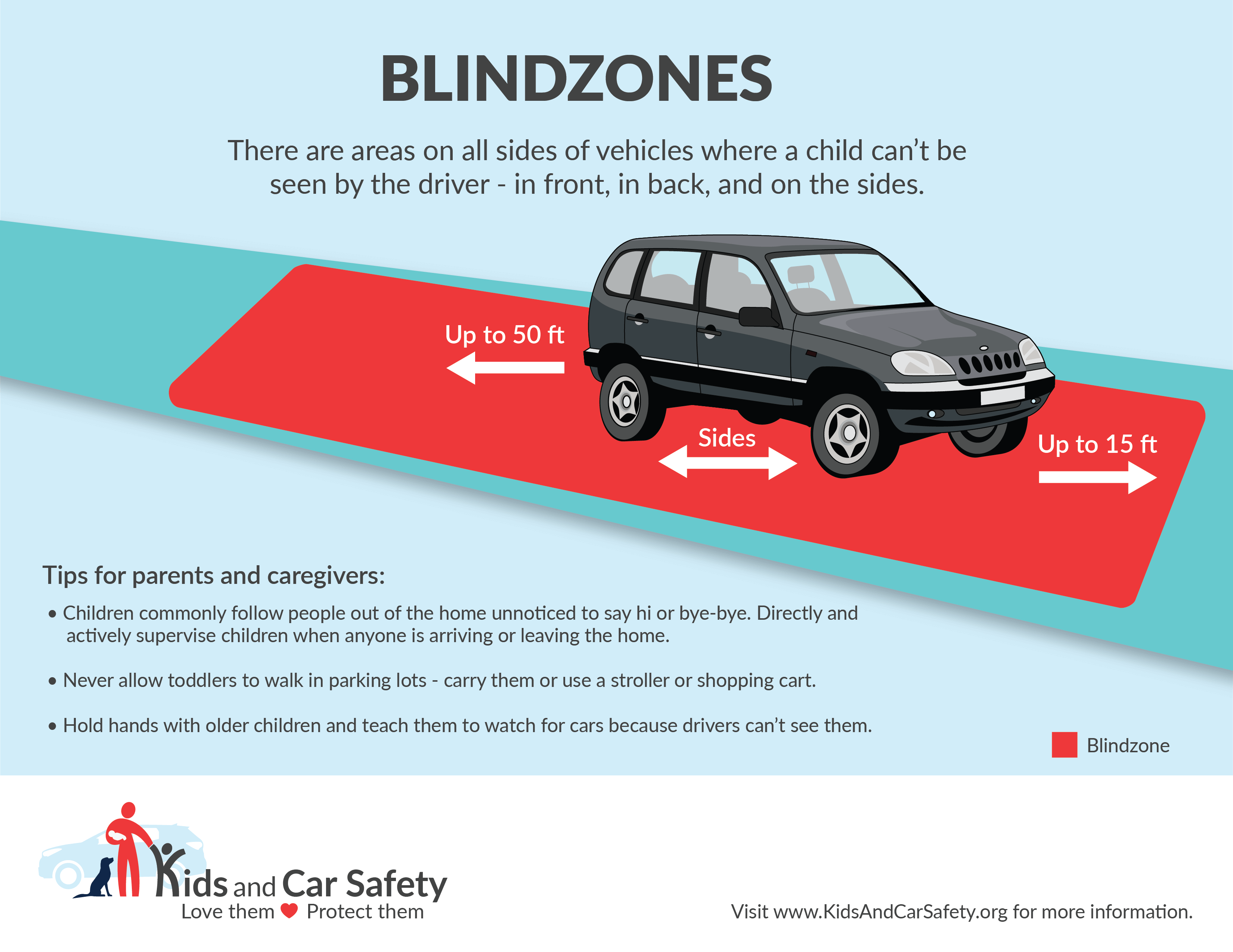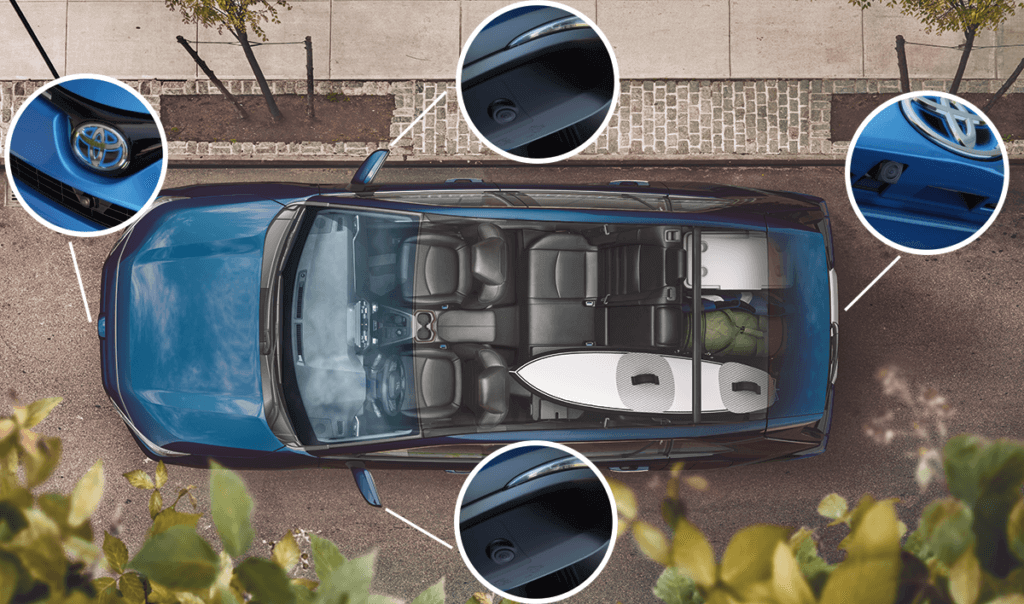Frontover Facts

Download English PDF Download Spanish PDF Download Chinese PDF
Every year, thousands of children are hurt or die because a driver very slowly moving forward didn't see them. These incidents for the most part take place in residential driveways or parking lots and are referred to as ‘frontovers.’ (the opposite of a backover)
Statistics
- Frontovers are responsible for 366 deaths and 15,000 injuries per year (The National Highway Traffic Safety Administration April 2018 report, DOT HS 812515)
- 75% of frontovers involved a larger size vehicle (truck, van, SUV)
- 61% of cases where the driver was known, involve a parent or someone who knows the child behind the wheel
.png)
.png)
Blindzones
Frontovers can happen in any vehicle because all vehicles have a front blindzone; the area in front of a vehicle that the driver cannot see. The danger tends to increase with larger vehicles. The blindzone in front of vehicles can be up to 15 feet from the bumper.
Why young children are so vulnerable
About 93% of frontover victims are at 6 and under. Young children are unpredictable. They have very poor judgment, little understanding of danger and no impulse control. In addition, young children do not recognize boundaries such as the yard, street, driveway, sidewalk or parking lot.
Toddlers have established independent mobility between the ages of 12-23 months, but the concept of personal safety is absent.
Common circumstances
- Bye-bye Syndrome – a child exits the home unnoticed and follows a parent or loved one into the driveway without their knowledge
- Parking lot dart outs – children run out in front of a slow-moving vehicle in the parking lot and the driver does not see them or does not have time to stop before hitting the child
- Playing in the driveway, front yard, cul-de-sac or apartment complex parking lot
Technology
Photo provided by: Toyota
Available on select vehicle makes and models is technology that uses a series of cameras and sensors to allow the driver to see all sides of the vehicle prior to moving. This referred to as birds-eye or 360° view technology. Just like backup cameras, all vehicles should come with visibility around all sides of their vehicle because you cannot avoid hitting someone you cannot see. A federal bill called the STOP Frontovers Act has been introduced that would require that drivers be able to see what is directly in front of their vehicle when pulling forward.
.png)
Pedestrian automatic emergency braking technology is now available in select vehicle makes and models. Drivers should be cautioned that not all forward collision avoidance technologies have the ability to sense the presence of a very small child.
Safety Tips
Drivers should heighten their awareness before engaging a vehicle into ‘drive’; especially when children are present. Young children are impulsive and unpredictable; still have very poor judgment and little understanding of danger.
Kids and Car Safety urges everyone to install a forward collision avoidance technology such as 360-degree camera system or automatic emergency braking on their vehicles. Many drivers believe they have to wait to purchase a new vehicle to have this safety feature but a forward-facing camera, 360-degree camera system and/or sensors can be installed on ANY vehicle.
- Install door alarms on the doors leading to outside your home so you know any time someone is leaving the home. Many toddlers sneak out of the home and are then run over. You can also use childproofing door knob and handle covers to prevent children from leaving unnoticed.
- Create habits to ensure children are directly supervised every time someone is arriving or leaving the home. This is when most tragedies at the home occur.
- Example of a routine you can implement at your home – Before leaving the home, verbally and visually confirm that all children are with an adult who is actively supervising them. The supervising adult should stay in direct contact with all children until the person leaving is safely out of sight.
- Walk completely around your vehicle scanning the area for children and pets prior to moving a vehicle.
- If you need to move a vehicle without another adult present, make children move away from your vehicle to a place where you can clearly see them or put them in the car with you before moving the car.
- Never allow young children to walk through parking lots alone. Young children should always be carried or placed in a stroller or shopping cart. Even holding hands cannot prevent a child from darting away.
- Do not allow children to play in driveways, cul-de-sacs or parking lots unsupervised.
- Consider using a home alarm system that alerts you if an outside door of the home is opened. This can serve as an additional warning if a child gets out of the home unexpectedly.
- Be aware that steep inclines add to the difficulty of seeing in front of and around a vehicle.
- Trim landscaping around the driveway to ensure you can see when entering the driveway.
- Be especially careful about keeping children safe during busy times, schedule changes and periods of crisis or holidays.
Tips to teach children
Talk to your children about the dangers of vehicles, but never rely on them to protect themselves. Even children who know about vehicle dangers can place themselvesin dangerous situations. It only takes one brief moment of distraction or a ball rolling out into the path of a vehicle to suddenly end a life. Children of all ages have been run over and injured or killed by vehicles.
- Parked vehicles might move. Warning signs that a vehicle might move include a running engine, reverse lights (white lights) and brake lights (red lights) or smoke coming from the exhaust pipe on a vehicle.
- The driver may not be able to see you.
- Never walk behind or in front of a running vehicle.
- Never play in parking lots, driveways, streets or cul-de-sacs unsupervised.
- When walking on the sidewalk, watch for cars pulling into or leaving driveways.
These precautions can save lives.



